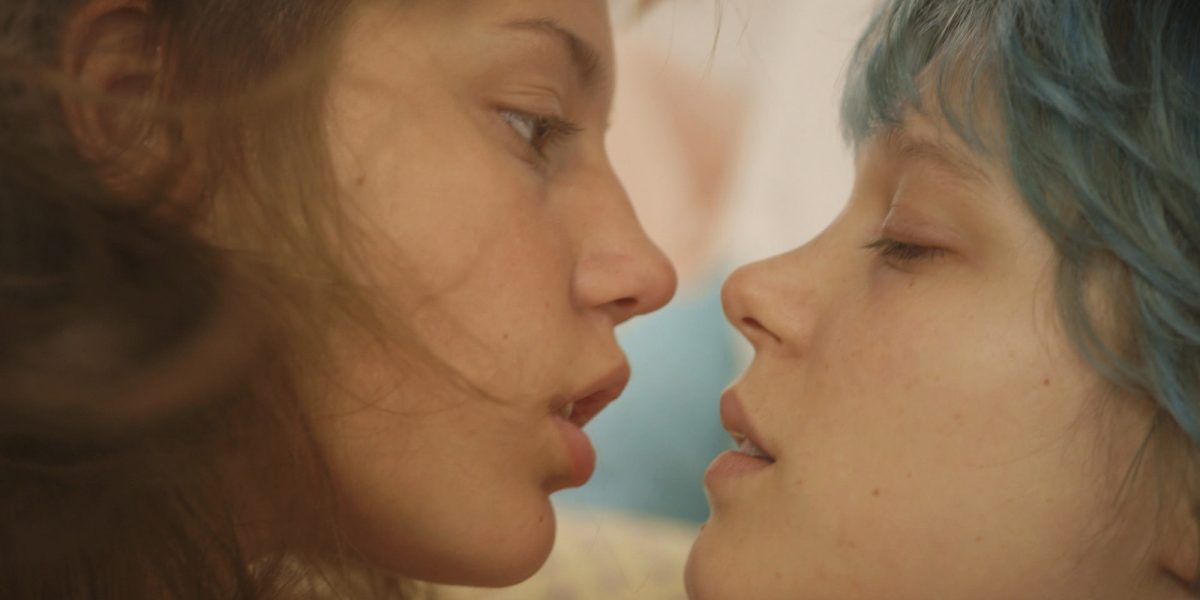
I never thought I’d utter this phrase: I loved Blue is the Warmest Color despite its seven-minute sex scene.
If you’re not up on la controverse de Cannes, the movie won the Palme d’Or at this year’s festival but was immediately dogged by negative publicity. The two young actresses at the heart of the love story said they felt bullied and exploited by director Abdellatif Kechiche and that he forced them into graphic sexual intimacy they weren’t comfortable with. What’s more, some female viewers, lesbians in particular, felt that Kechiche’s film was more about the male gaze than real intimacy between two women.
Defending a film against accusations of the “male gaze” is a bit tricky. Aren’t all films essentially the “gaze” of the director? Yes, Kechiche’s film is abundantly sensual—fleshy, you might even say. But he doesn’t only apply this gaze to the sex scenes. He eroticizes a bowl of spaghetti Bolognese as much as a naked breast. The whole film is an orgy of human desire.
And it’s a remarkable achievement: A three-hour film about a subject no less well-trodden than a young girl’s first love that is absolutely mesmerizing from beginning to end. When we first meet Adèle (Adèle Exarchopolous), she is in class reading La Vie de Marianne and learning about the exquisite agony of love at first sight. She’ll soon experience that phenomenon herself, passing by the punky, blue-haired Emma (Léa Seydoux) in the park. Their eyes meet—Emma has a particularly amused, knowing way of carrying herself—and Adèle’s life is changed forever.
Whether Adèle is a lesbian or not is never totally clear. What she is is completely consumed by the pixie in the park. She tries sex with a popular boy, but finds it unfulfilling. Then she has a fumbling encounter with a female classmate, a poor substitute for her fantasy girl. Finally, she finds her way to a lesbian bar, meets Emma, and they begin a love affair.
If Kechiche’s primary concerns are with the flesh, his film is also about class and how a certain kind of elitism can corrupt a relationship. Adèle is a smart girl but she has simple needs: She likes to read and she wants to teach children. Emma is an artist, who surrounds herself with creative types and art patrons. She keeps characterizing Adèle to her friends as a “writer” because somehow saying that her girlfriend simply likes to read isn’t enough.
Likewise, Emma is out and proud to her intellectual mother and epicurean step-father. Adèle’s family are more traditional (they’re the ones who make the Bolognese—“simple but delicious” as Emma calls it; while Emma’s parents serve raw oysters with a squirt of lemon and glasses of highly-deliberated-over white wine.) They think Emma is Adèle’s philosophy tutor and inquire about her boyfriend (she tells them he’s in “business,” which is exactly what they want to hear). The class differences, Kechiche suggests, are what threaten their relationship more than anything having to do with age or gender.
The film is deceptively simple. Many of the scenes sound banal when describing them—dinner parties and gallery openings and reading lessons in a kindergarten class— but in Kechiche’s hands they are rife with unexpected complexity. Kechiche employs the close-up like few directors—his gaze becomes our gaze, as it were, and it’s mostly wonderful to view the world through his sensual eyes.
His two leads are just incredible: Adèle Exarchopolous takes us through seemingly the entire emotional repertoire of adolescence—weepy and emo one minute, youthfully exuberant the next. (In several scenes, Adèle abandons herself to the giddy, stomping thrall of a huge crowd). And, most importantly, we see her discovering her own body and its power to give and receive pleasure.
And Lea Seydoux, with her alert, elfin looks and preternatural self-possession, is a wonderful counterpart. She, in some ways, is the stand-in for Kechiche: She regards Adèle with amusement, empathy, fascination, and lust.
As for that notorious sex scene? Well, it just seemed…gratuitous. There’s that old artist’s adage of showing, not telling. In fact, Kechiche is a master of doing just that. But he showed us. And then he showed us some more. And finally, he showed us so much it became wallpaper.
